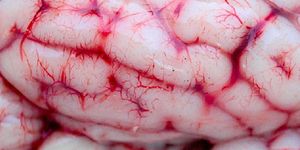A New Tool For Detecting and Treating Concussion
When a significant force is applied to the head from an impact or other injuries a concussion can result. When the energy is enough to jar the brain inside the skull, it can cause brain tissue to smash against the skull.
The bones of the head are designed to protect the brain, and it does, but when an accident, fall or other injury causes the brain to move around significantly, it's like shaking an egg. Chances are, when you look inside the egg, there will be damage. The same happens with brain tissue. According to the CDC, every 23 seconds in the United States, someone suffers a traumatic brain injury (TBI). Repeated trauma can contribute to neurological deficits later in life, including dementia and Chronic Traumatic Encephalopathy (CTE)
Correctly diagnosing a concussion can be tricky. There are 21 different symptoms associated with concussions. Not every concussion will result in a loss of consciousness, and no two head injury patients are alike in their presentation and recovery. Getting the right information is critical when a TBI has occurred. A new piece of technology to help physicians diagnose concussion could help patients get help sooner and recover faster. It's called the BrainScope One, and it's a non-invasive brain sensor that can assess a patient's brain health. It was approved by the FDA under the name Ahead 300 in early 2017 for use in diagnosing mild TBI. The system provides a multi-dimensional assessment of brain function including EEG measures, cognitive performance tests, and standard, digitized concussion assessment tests.
The system is being used in multiple research studies, especially within the Brain Initiative under the auspices of the Department of Defense. The company has more than $27 million in defense research contracts. Also, the system is being used in a clinical trial being conducted by pharmaceutical company Prevacus. The company is currently developing drugs to treat TBI and other neurological conditions and will be using the device in some upcoming Phase 1b clinical trials. The system will be used as an objective measure biomarkers for brain injury and assessments for brain function.
The device is also becoming popular in urgent care clinic settings. Going to the emergency room after an injury or accident can be time consuming and expensive. Maryland and New York, urgent care locations including Physicians Now and Five Star Urgent Care are using the handheld device to assess patients for a head injury. It also has applications in combat, since it's small and easily transported to field locations that could not support a CT scanner or MRI imaging. Finally, the technology was developed with the help of an award from the National Football League. In 2015, when the league was dealing with the fallout from player lawsuits and CTE diagnoses, and concussions were on the rise, funding the system was part of their efforts to address the concerns of retired players and health professionals. Check out the video below to see how urgent care centers near Syracuse will use the technology.
Sources: BrainScope Digital Journal CDC









